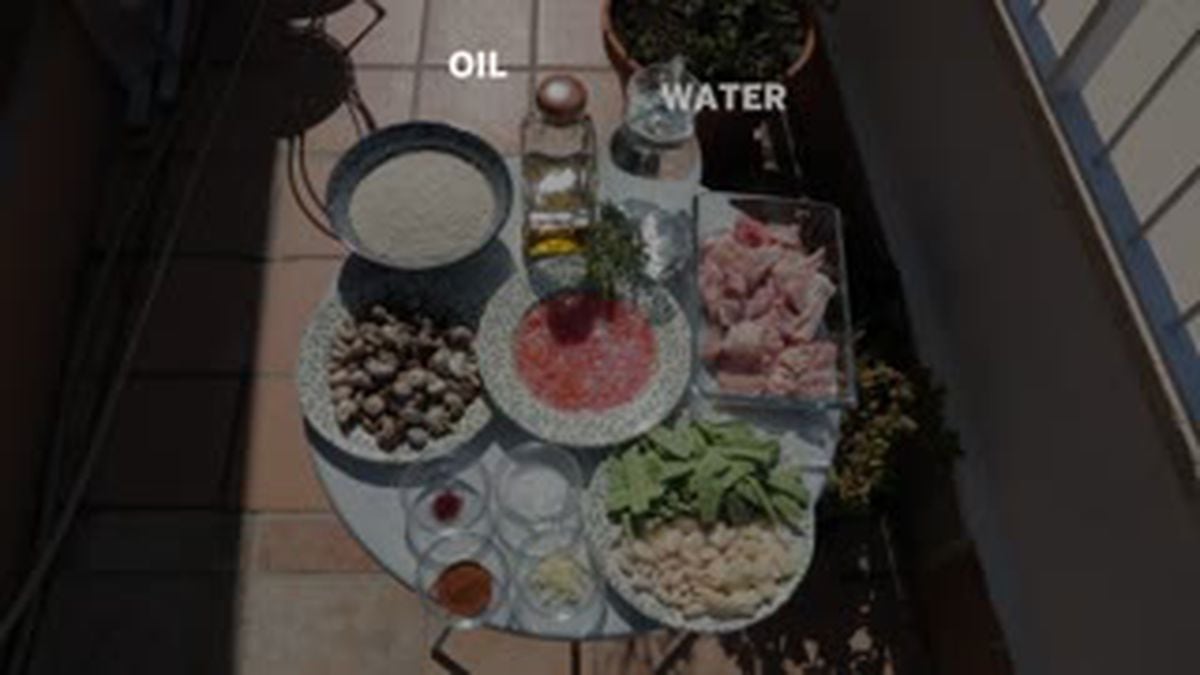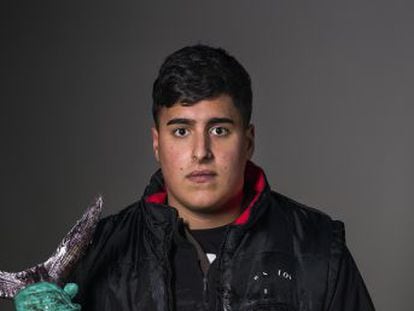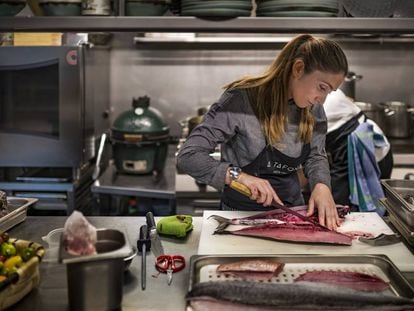Valencia takes paella to the next level
Spain’s most emblematic dish is also its most corrupted. Paella has become the generic term for hundreds of random rice recipes. But demand for the real thing is growing. The dish may need no translation these days, but it’s time to talk about its roots. This is a trip from the wetlands of La Albufera where the rice is grown, to the Michelin-starred restaurants where the humble grain is transformed into haute cuisine
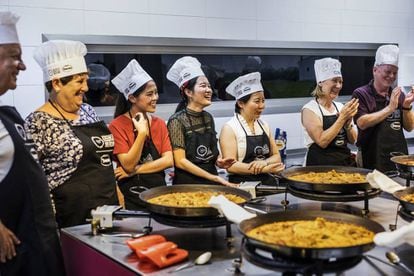
The first time that Yang tried paella was in Singapore. She gasps with surprise as a tray of diced rabbit is produced, while her colleague Amy homes in for photos of the raw meat. Both are Chinese and 26 years old. Along with their friend Chunli, they are on a tour of the food market in downtown Valencia with an English-speaking guide who provides explanations in theatrical tones while pushing a shopping cart. The guide informs them of the exquisite qualities of saffron, urges them to smell paprika, and shows them three different kinds of Valencia beans. Taking one, she says, “This is garrofó. International name: Lima bean.”
The rest of the group consists of a grandfather-granddaughter duo from Seattle, a family from Charleston, South Carolina, an anthropology student from Chicago, and a retired couple from Gibraltar. All of them are here to learn how to make a paella in its original form.
As the oil starts to sizzle in the paella pan, the class gets underway. More than 13,000 students from 50 different countries have already learned how to make a true paella at the Escuela de Arroces y Paella Valenciana over the last four years. The course at this cooking school costs €55 and lasts four and a half hours. Donning chef attire, students are about to have their preconceived ideas of what goes into a paella shattered. Between giggles and selfies, they prepare the snails that will be tossed into the massive cast-iron paella pan that gives the dish its name. As the class progresses, they discover that paella from Valencia has no shellfish. They also learn that it needs ‘ round’ rice, such as the Bahia or Bomba varieties, and that when it’s done it becomes the centerpiece of a family reunion or a party of friends, with the end result served in the same pan it is made in.
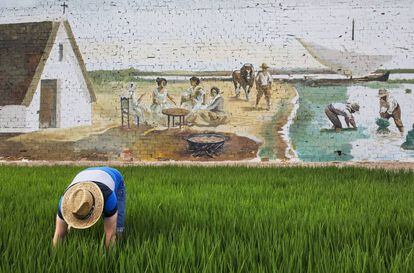
One of the students, Ed Griffin, became a paella devotee more than 40 years ago when he came to Valencia to study Spanish. The family he stayed with made paella every Sunday and shared it at raucous gatherings with uncles and aunts, cousins and grandparents. On his return to the US, he tried to replicate the culinary experience using recipe books and trial and error, but in the end he resolved to return to the birthplace of the dish. This is now his second course, and he is joined by his wife and daughter.
Interest in Spain’s most famous dish has increased in recent years and can be measured by the curiosity it inspires online; in 2015, paella was the fourth most googled dish after pizza, sushi and risotto, according to a study carried out jointly by the cooking school and Original Paella, a company that sells paella-making tools to countries across the globe, from South Korea to Uganda. In 2017, online searches rose by 48% with eight million queries that year. According to a spokesman from Original Paella, “a number of countries in the last few years have opened paella restaurants and catering services. We know that because our foreign sales have shot up by 35%.”
Fascination for paella is nothing new. Tourists who flocked to the Spanish coast during the 1960s and 1970s were captivated by this innovative way of cooking rice, keeping it “dry, whole, juicy and tasty,” as journalist Paco Alonso describes it.
More than 13,000 students from 50 different countries have already learned how to make a true paella at the Escuela de Arroces y Paella Valenciana over the last four years
Alonso is one of the founders of Wikipaella, which was established four years ago with a view to promoting restaurants that make the dish properly. Alonso and his fellow Valencia-based founders, who all come from the world of advertising, were aware that paella was becoming synonymous with anything rice-based. “It’s one of the most tampered-with dishes there is,” says Alonso, speaking at a sidewalk café in the heart of Valencia. “Paella is one thing, and rice with stuff in it is quite another. It is on menus everywhere, but in many restaurants it comes in a frozen bag: a little water is added to bring it back to life, and the tourists wolf it down happily.”
Tired of this growing trend, Alonso and his colleagues decided to launch a platform dedicated to explaining the essence of an authentic paella and where to find it. Every year the Wikipaella guide includes the best paella restaurants, particularly in the Valencia region, paying special attention to those that use firewood to heat it. Wikipaella also distinguishes between classic paella and the seafood variety. But first they asked 200 of the best paella chefs for their recipe, to discover what goes into an authentic paella.
“Using statistics, we discovered what the most common ingredients of a Valencian paella are,” says Alonso. The 10 basics turned out to be rice, extra virgin olive oil, saffron, salt, water, tomato, Lima beans, green runner beans, and chicken or rabbit. Variations were duck, garlic and rosemary. The same research was carried out for arroz a banda – rice cooked in fish stock – and rabbit or snail paella.
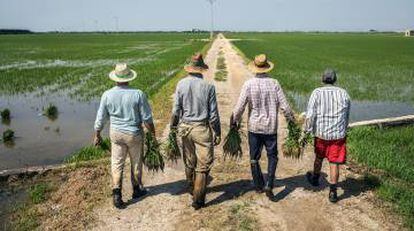
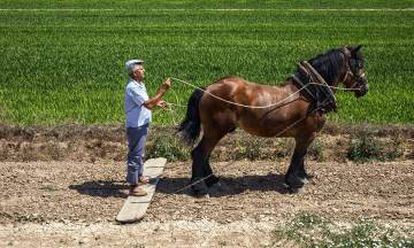
“Whatever you have at hand in each region and season dictates what you use,” says Alonso. Paella is a concept rather than a recipe, and it requires following a specific traditional technique. “What really matters is how the rice comes out in the end. It should be tasty in itself, it shouldn’t need stock, nor be flat. Nobody gets fussy about the ingredients of a paella,” he adds. “One of the most famous paellas in Valencia is made from cabbage and cod. There’s also one that uses ox liver; and in the Safor region of Valencia, it is made with pepper yet no one questions its authenticity.”
The ‘authentic paella’ debate must already have been raging in 1891 when the magazine Última moda (or, Latest Fashion) posed the question: What should a text-book paella consist of? Answers included ham, sausage, black pudding, pork, jerky, beef, all kinds of game, both saltwater and freshwater fish, shellfish, and eggs. In short, whatever you want or whatever is handy.
It would appear that there is little room for argument. Yet several years back, UK celebrity chef Jamie Oliver thought to include chorizo – spiced sausage – in his version of paella, and received a tsunami of criticism and even death threats on Twitter. “What gets under the skin of Valencianos is when pineapple is added, or ingredients that have nothing to do with our local food – and mixing them with rice cooked in pots [instead of a paella pan] and then calling it paella,” says Alonso.
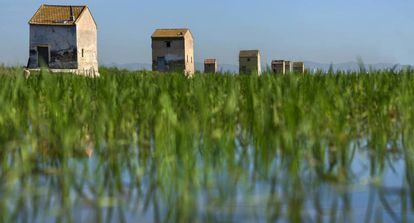
Something similar has happened to pizza, though on a far broader scale. There are dozens of ways to make pizza and the term covers an extensive range of recipes. Last year, however, the Italians managed to get UNESCO to declare Neapolitan pizza-making an Intangible Cultural Heritage of Humanity and have established a rule of thumb when it comes to preparing it. Could the same thing happen to a Spanish dish? “Here in Spain, we’re incapable of simplifying it sufficiently,” says Alonso. “Paella comes from Valencia and you have to do what they did in Naples and go back to the basic version.” For the present, paella is aspiring to have its own international day on September 20.
Approximately 100 kilometers from Valencia, in the heart of paella territory, the chef Quique Dacosta has made his triple-Michelin-starred restaurant in Dénia, Alicante a point of reference when it comes to paella. Demonstrating the appeal of the dish, he picks up his smartphone and opens his Instagram account. “I post a picture of a beautiful dish I make and it gets far fewer ‘likes’ than a paella. Look at this: 2,000. Now let’s look for one of paella. Here: 5,000. The paella is far more symbolic. Your mouth can’t water for what you’ve never tasted.”
Dacosta has set up a laboratory next door to his kitchen. It has stark white walls made from a futuristic-looking material called krion, which also clads the ceiling. At the center of the room is a black table. Dacosta stands behind it like a captain at the helm of his ship. Between October and November of this year he will open a paella and traditional rice dish restaurant in London. “As a creative chef, my job is to manage tradition,” he says. “I emerge from my boundaries and instead of starting an innovative restaurant, I try not to replicate any that I already have, which would be the easy thing to do. The backbone of the venture will be rice dishes from the north to the south of Valencia; both the seafood variety and the kind from the interior, cooked with sarmiento or wood; over a gas burner or in the oven; in earthenware or metal pans… and of course there will be Valencian paella.”
Dacosta cooks as he speaks. He works quickly. He’s just returned from Milan and he’s shortly got to go and pick up his children. He travels a lot but doesn’t stay away for long. “Tradition is the point of departure,” he says. “This is one of the most innovative dishes I have created in my life. And yet it’s still arroz a banda with a base of crab and mantis prawn, with mussels, oysters and clams and a saffron infusion. The unconventional part is not the recipe, which already existed, but the result – until now it has never been eaten like this. The grains don’t pile up and you can see the base of the paella”
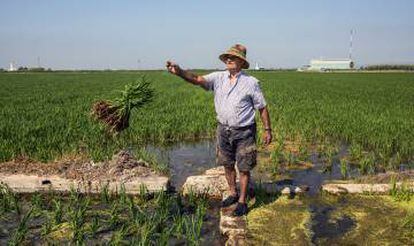
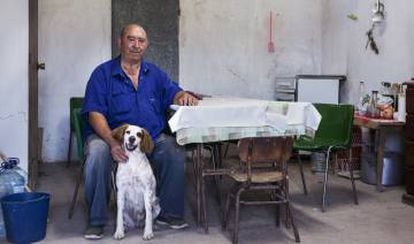
The room fills up with the smell of the sea. “I am going to make arroz a banda socarrat,” he continues, referring to the toasted rice grains at the bottom of the pan that are particularly tasty and appreciated by diners. Dacosta has turned the dish around, placing the socarrat on top rather than the bottom. He says that Spaniards instinctively understand the metaphor, but if a German or a Turk comes along, they don’t get it. “As far as they’re concerned, I’ve burned the rice. That changes when they taste it, but their minds need to be opened; it needs to be explained.”
During our conversation, Dacosta mentions amylose and amylopectin – the starches present in the rice that alter its consistency and its capacity to absorb both the flavors and the protein from the stock. Dacosta acquired all this technical knowledge while compiling his book, Contemporary Rice Dishes – a journey to the heart of new culinary creations based on tradition. It was published in 2005 and it starts by asking, Why is there no rice in haute cuisine?
“Nowadays there seems to be a move towards innovation but it doesn’t break with convention as much as you might think, mainly because of the great cultural significance of rice. It appears that paella monopolizes everything and that Valencianos will never be able to do anything different,” says Dacosta, who is dressed in black and white. He explains that until very recently haute cuisine had to hail from the Basque Country, Catalonia or France, but not from Valencia, where rice lies at the heart of its cuisine. “Rice is very much like a chameleon. A grain can be part of the most innovative dish in the world, and also of the most ancient and ancestral one,” he says
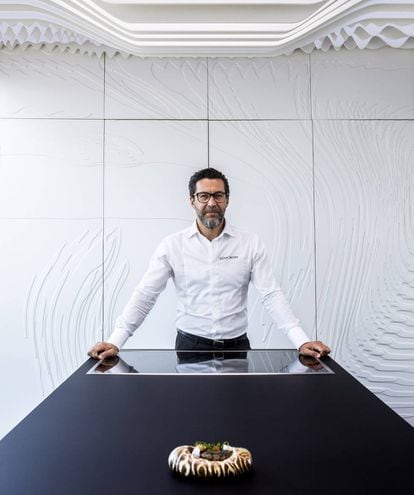
From Vicente Linares’ boat, one can see the odd heron emerge from the rice fields near La Albufera Natural Park, 10 kilometers from Valencia city. The lake and its ecosystem form a labyrinth of canals and paths that he knows like the back of his hand. In the distance you can see high-rise buildings from the region’s capital.
“You could see the bottom of the lake before,” says Vicente. “There were a lot more eels and wild duck.” Nowadays Vicente, 77, spends a lot of time by the small building that holds the pump controlling the water levels. He sits on the porch in the sunshine with his dog, Blanca. At this time of the year it is not allowed to catch eels, which he has been using to make the dish all i pebre (garlic and pepper, in the Valencian language) since he was 12 years old.
Vicente’s life has always revolved around rice. Rice has been grown here since the Arabs arrived in the 8th century. The rice culture subsequently spread to other regions like Andalusia, which is now the top rice producer in the peninsula.
Ten years are needed before a new rice variety is ready to go on the market
“Rice is tricky. It’s pretty to look at, but it’s delicate. You have to keep a constant eye on it,” says Hilario Anacleto, 67, a grower in La Albufera. He rises every morning at 6am, puts on his hat and boots, and ventures out into the wet fields. “I was born over there,” he says, pointing to a small house in the middle of a rice field.
Anacleto’s father was a laborer, his grandfather was a rice farmer and now his 39-year-old son has followed in his footsteps, though he runs it alongside his job as a computer engineer. “I lost my job during the crisis and decided to help my father,” he says. His aim until the harvest in September is to ward off two kinds of enemy – the ducks and flamingos who feast on the rice plant, and also the fungus called pyricularia that can destroy a crop in a matter of days.
Several kilometers inland, a state-funded laboratory is working on finding genetic answers to Anacleto’s problems. In the town of Sueca, Concha Domingo, coordinator at the Valencia Institute of Agricultural Research’s rice department, explains how varieties are crossed in order to improve the strain. “New challenges come along, such as climate change,” she says. “That means restrictions on water, so we work on plants that will thrive in these conditions; ones that are more resistant to fungus and more productive.”
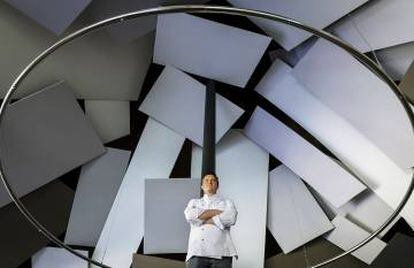
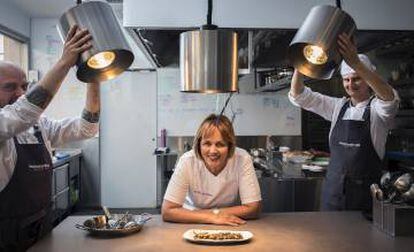
It is slow work. Ten years are needed before a new variety is ready to go on the market. Domingo and her team cross varieties and, with every new generation, detect which strains are interesting to keep in the mix. All of which has consequences for paella and other rice dishes. “There are chefs who say that the best variety is Gleba or Bomba. That’s not so,” says Juan Valero, 36, from the Arroz Tartana brand. “The main thing is to know what you’re cooking. Making paella is not the same as making risotto or sushi. You have to know how to cook it – it’s not the same on a wood burner as in the oven. And you have to know how you want the final texture to be – in Valencia we like it loose, but in Asturias and Cantabria it tends to be creamier. It also depends on whether it’s for one family or for 40 people.”
Valero belongs to the fifth generation of La Albufera producers, and he spends his holidays checking out rice plantations in the US. He and his cousins specialize in single varieties, meaning that a packet will contain only Bomba or Albufera. “Until five years ago, the aim of the family business was to grow round-grain rice, the more the better. End of story,” he says. “Now we are trying to sell in a more specialized way. If we have managed to develop a wine and olive oil culture, why can’t there be a rice culture?”
Valero is speaking from a shed on one of the estates acquired by his great-grandparents and where he shows visitors around to explain the journey that a grain of rice makes from seedling to supper plate. He is surrounded by a sea of green land reclaimed from the lake. “La Albufera used to have 30,000 hectares of water,” he says. “Now that is down to 2,800. The process took off with the steam engine which was an efficient means to dry up the lake.”
If we have managed to develop a wine and olive oil culture, why can’t there be a rice culture?
Juan Valero, Arroz Tartana
Rice producers have not always made it their business to know how the different varieties of rice behave in the kitchen. In fact, it is only in the last few years that supermarkets have differentiated between the varieties. “When I started working in this field in 2000, people knew almost nothing,” says Santos Ruiz, manager at Arroz Valencia. “If you went to a shop, there were just different brands with maybe some long-grained rice to choose from. The first variety to hit the shelves for mass consumption was Bomba and now you can choose between seven or eight varieties.”
Ruiz is an expert. He helped Dacosta write his book and he carries out tastings to distinguish the qualities of a certain variety, such as its texture and how it feels on the palate. “We certify the origin and the quality of the rice,” he says. “We ask the farmer to use certain seeds – to plant only Bomba, Albufera and Senia. We don’t accept others because these are the ones that work well with our cuisine and our tradition.”
In Valencia, the preparation of a paella is taken very seriously. It’s a rite that has its own pace, timing, difficulties and a degree of entertainment value. Each paella presents a new challenge and it requires experience to get it just right. Jesús Melero, 62, has been making paella professionally for 40 years. He coordinates Sueca’s International Valencian Paella Competition, which uses a traditional recipe made over wood. For the past five years, the semi-finals have been taking place around the world. Forty finalists then come to Sueca in September for the last round. This year the semi-finals took Melero to San Diego in the US, Nagoya in Japan and Querétaro in Mexico. In each country, he gives the contestants a short class before they compete, and then supervises each phase of the competition.
Paella is destined to be a global phenomenon – the trick is to make it a good one
“The problem can be the altitude, because at sea level rice cooks in 16 minutes but in Mexico City, at an elevation of 2,250 meters, it needs 28,” he says. “Also the air currents…” This means adjusting the amount of water and testing the consistency again and again. “The Japanese find these variables challenging,” he says. “They want exact measurements. They don’t like the ‘it depends’,” he says laughing. “Another thing I often find abroad is they don’t understand that in a paella, all the ingredients are seamlessly integrated. They tend to throw things on top of the rice.” Ultimately, however, the decisive factor is the control of the heat. “There’s a lot of prestige that goes with winning,” he adds. “There have been restaurants in debt [whose chef has entered and won] that have emerged from it within four months.”
María José San Román, the chef at the Michelin-starred restaurant Monastrell, says she is going to enter the competition this year. But that is not to say that she is paella-mad. In fact, she has taken rice dishes in a different direction at her Alicante-based restaurant. “I respect paella. It’s great. I respect the rules and the dogma. I could not have progressed in the world of rice without those who defend it, but I choose to leave it in an urn and I tell it, there you go. Designation of origin: Saint Paella,” she jokes.
San Román’s restaurant is located by the port. “When you come to Alicante, the cry is ‘long live all kinds of rice dishes!’ Really, Valencia is healthily envious of us, because we have managed to free ourselves from paella, while they are still scared to depart from it.”
There are seven different types of rice dishes on San Román’s menu. There is rice with eel and rice with cow’s hoof and chickpeas, which is surprisingly light. Her two sins are to make paella with wholegrain rice and to use a pressure cooker. “It’s even breaking with tradition to make rice with onion,” she laughs. “In Valencia, that is not allowed. Pro-hi-bit-ed. You will burn on the stake.”
Several years back, San Román went to Japan and saw that many shops sold small machines for refining rice according to your requirements. She became fascinated by the idea and decided to try a semi-wholegrain rice that she found refined in this way at the Roca mill in Segorbe, Castellón. The Roca mill works with various gourmet restaurants and functions on an almost personalized scale. “Every week, I place my order for 50 or 100 kilos. They keep my rice with its shell on in their storeroom with my name on it. Fresh. Every time they ask me to what degree I want it refined. Then they deliver it to me.”
This rice is the basis of research that San Román is carrying out at the University of Alicante in a bid to find out what happens to a grain of rice as it is refined, and whether the minerals are lost or not. The research also involves Juana Jordá, a professor in agrochemistry, who clears up doubts and suggests new lines of research. Like Dacosta, San Román is going to teach a class as part of the first Master’s Degree in Rice and Mediterranean Haute Cuisine to be launched at Alicante University in October. “The chefs tell us what they discover as they cook, but they don’t know about the physical-chemical processes,” says course coordinator Ana Zaragoza.
The course aims to teach students about the different varieties of rice and give them a scientific base for cooking rice in a city that aspires to become the home of the Spanish rice dish. Another rice maestro delivering the degree is Kiko Moya. His two-starred Michelin restaurant L’Escaleta in Cocentaina, Alicante, devised rice al cuadrado some years back. He broke both with form – no longer using a circular dish but a small slim rectangular plate– and content. The result is a drier rice dish with unexpected ingredients such as cured tuna and seaweed.
In his opinion, you eat good rice in the region of Valencia and the next step is to take this further afield, so that an excellent traditional paella may be eaten anywhere in the world, just as you might find an excellent pizza in New York or Milan. Because paella is destined to be a global phenomenon – the trick is to make it a good one.
English version by Heather Galloway .

